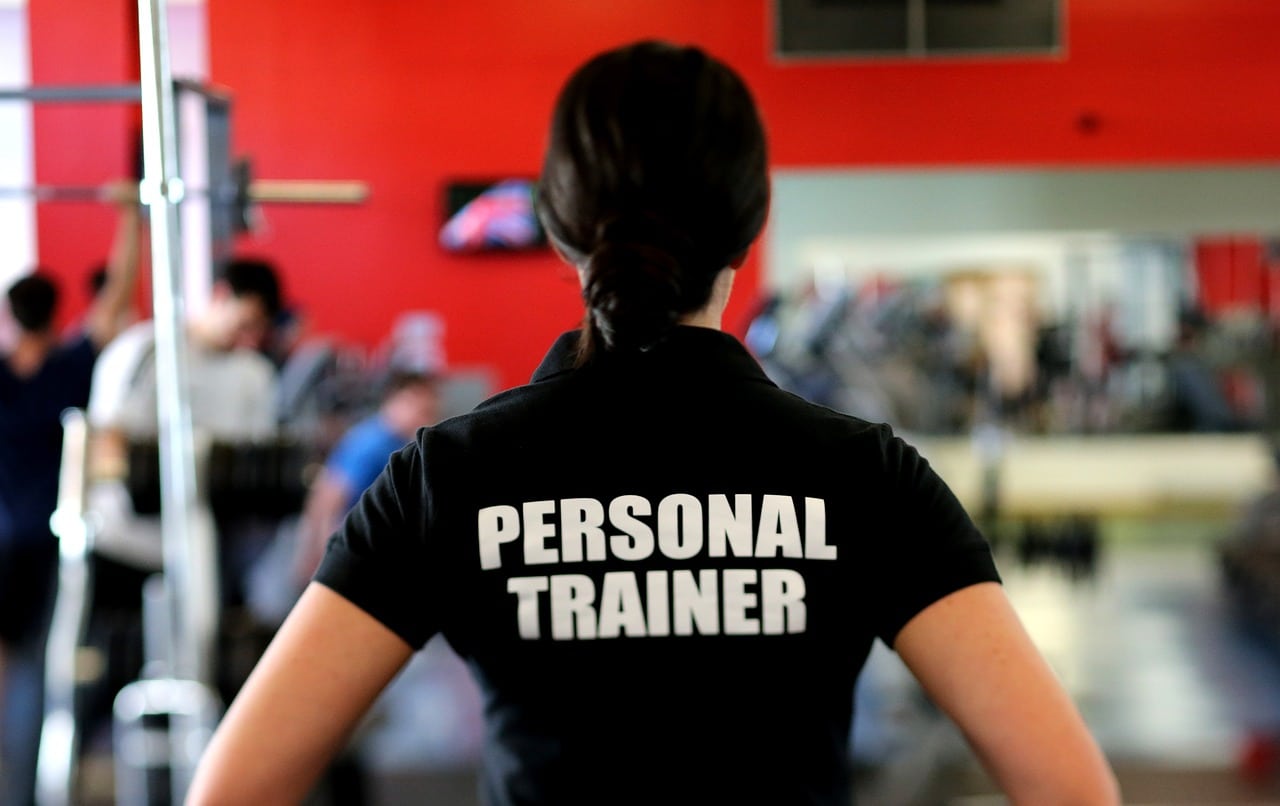In today’s consumer-driven world, content marketing remains one of the best tools health and fitness professionals could leverage to build trust, develop relationships, improve conversions, and generate leads.
Put simply, content marketing is a “mission-critical to-do” that’ll help your business grow and thrive regardless of whether you’re a personal trainer, health coach, or nutritionist.
But let’s be honest. Content marketing can be an intimidating concept to learn.
Between crafting client programs, coaching clients during their sessions, and keeping your health and wellness knowledge up-to-date, you may have little time or mental bandwidth left to dive into the specifics of content marketing.
That’s why this article exists. Here, we outline what you need to know about content marketing as a health and fitness professional to create high-quality, helpful content that’ll establish your credibility, build trust, and strengthen your reputation.

The Essential Business Course for Health and Wellness Entrepreneurs
Gain the skills needed to build and run a thriving, lucrative health and wellness business.
What Is Content Marketing?
According to the Content Marketing Institute, “content marketing is a strategic marketing approach focused on creating and distributing valuable, relevant, and consistent content to attract and retain a clearly-defined audience—and, ultimately, to drive profitable customer action.”
The keywords here are “relevant” and “valuable.”
- Relevant: Information that’s tailored to their pain points or needs (e.g., a roundup of the best squat shoes for a reader looking to improve their lifting form)
- Valuable: Whenever someone reads your content, they have a specific goal in mind. Examples include getting answers to a question, solving a problem, or simply learning more about your services. In marketing speak, “usefulness” refers to how well your content helps them accomplish that goal.
People are inclined to seek out content marketing; they want to consume it rather than avoid it. Why? Because it’s relevant to and fulfills their specific needs.
Types of Content Marketing
There are many types of content marketing out there, but here are some of the most common and popular to get you started.
Social Media Content Marketing
There are over 3.6 billion global social media users—a number projected to increase to almost 4.41 billion in 2025. Reaching and converting even a small percentage of that could generate enormous returns for your business.
Within social media content marketing itself, there are many platforms you could choose from: Facebook, Instagram, Pinterest, TikTok, and YouTube, amongst others. There are also several ways you can create and share content on each of them. For example, you could create, then share infographics on Pinterest; host live streams on Instagram, Facebook, and TikTok; and post educational, long-form videos on YouTube.
Blog Content Marketing
Blog posts (like the one you’re currently reading) are a powerful type of inbound content.
With a blog, you can promote “internal” content and relevant service offerings via links, plus add social share buttons.
An example of a successful blog content marketer is our graduate Charlotte Faith, an AFPA Certified Holistic Nutritionist. She pushes out useful recipes on her website to attract readers who may become interested in her services over time.
Podcast Content Marketing
In 2020, The Infinite Dial (the longest-running survey of digital media consumer behavior in the US) found that 49% of Americans aged between 12 to 32 had listened to a podcast within the last month—with an average of six listening hours a week.
Like blogs, podcasts allow for a lot of creativity. You have the freedom to decide the exact topic to cover, how long you want your episodes to be, and where you host your channel.
Video Content Marketing
Research conducted by Wyzowl showed that 69% of consumers say they prefer to learn about a brand’s product or service through video.
Here are more convincing statistics on why you should consider video content marketing: Video marketers get 66% more qualified leads per year and achieve a 54% increase in brand awareness.
There are many ways to share video content, including YouTube, various social media platforms (e.g., Instagram, Facebook), and even blog posts.
Paid Ad Content Marketing
Content marketing doesn’t necessarily need to be free.
You can also leverage paid ads to reach a broad audience and get visibility in all the places you want to be seen. Examples of paid advertising include Pay-Per-Click (e.g., Google AdWords, Facebook Ads, Twitter Ads, and Instagram Ads), online partnerships, and website takeovers, to name a few.
That said, paid ads only work well when paired with relevant and valuable content.
Getting Started with Content Marketing as a Health and Wellness Professional
With so many different types of content marketing to choose from, how do you decide which ones are right for your business? Let us walk you through the steps.
Step 1: Develop Your Content Strategy
In general, content strategy refers to your business’s approach to creating and distributing content for your target audience. It helps you understand what your audience wants and needs, so you can focus on creating relevant, useful, educational, or otherwise valuable content for them.
In other words, the right content strategy helps ensure that you attract the right audiences who’ll eventually convert into—and remain as—paying clients.
But how do you come up with one?
The first step is to ask yourself, “Why”; why are you creating content in the first place? What do you wish to achieve through your content? For example, are you trying to boost awareness, generate leads, or engage current clients?
Knowing your “why” provides insights into where your audience currently stands in the sales funnel, which, in turn, guides you on the specific types of content you should create.
What Is a Sales Funnel?
The sales funnel can be universally boiled down into three stages:
- Awareness: Leads have become aware that they have a need that must be fulfilled or have become aware of your product or service. For instance, an individual who wishes to adopt better lifestyle choices may be in the market for a Certified Health & Wellness Coach.
- Evaluation: Leads are aware that your service could fulfill their need, and they’re trying to determine whether you’re the best fit. For instance, let’s say you’re a Certified Prenatal and Postnatal Fitness Specialist. Someone who’s just given birth may be aware of your ability to coach them through an exercise program—but is also actively searching for and comparing other fitness professionals.
- Purchase: Leads are ready to purchase (i.e., hire you).
Understanding the Sales Funnel’s Impact on Content-Type
As mentioned earlier, different segments of the sales funnel call for different types of content. Here are the types of content HubSpot recommends for different parts of the sales funnel:
- Awareness: Whitepapers, E-books, Tip Sheets, Checklists, How-To Videos, Educational Webinars
- Evaluation: Service Offering Webinars, Case Studies (i.e., past clients’ successes), FAQs, Data Sheets, Walk-Through Videos
- Purchase: Free Trials, Live Demos, Consultations, Coupons (i.e., discounts)
So, let’s say you’re a Certified Autoimmune Holistic Nutrition Specialist, and your content marketing goal is to move more of your leads from the “Awareness” stage to the “Evaluation” stage.
A possible content piece for you to create is an e-book covering the various holistic dietary strategies individuals with autoimmune conditions could adopt to promote optimal health.
This establishes you as a source of authority on the matter and highlights your ability to develop plans for people who have an autoimmune disease, putting you right on the radar of potential clients.
So, give thought to what you’d like to achieve with content creation. It’ll help you narrow down the specific types of content to create.
Step 2: Gather Insights into Your Target Audience
At this point, you should have a clear idea of the type of content that’ll be most relevant and beneficial to your business needs (be it lead generation or conversion, etc.).
This is where you should start thinking about your target audience’s characteristics in terms of demographics, psychographics, habits, and preferences. Do they live in an urban setting or the suburbs? Which online platforms do they spend most of their time on? Do market research if necessary.
Identifying your buyer personas is crucial.
It helps you pick the most suitable content marketing channels (e.g., going with TikTok if you’re trying to attract younger clients) and informs you on how you may need to adjust the messaging in your content pieces to target your marketing to them appropriately.
For example, as a personal trainer, you may find that you have two primary buyer personas: one that’s identified as the busy mom, the other identified as a female college undergraduate. It wouldn’t be ideal to speak to these two audiences the same way.
Both face different priorities and challenges in leading active lifestyles—so speak to their unique needs by creating content messaged just for them.
Step 3: Be Selective About the Channels You Ultimately Choose
Okay, so you now know the specific types of content, marketing channels, and messaging tone you should use to advance your business goals. List them down, and evaluate them carefully.
Do you have the resources (i.e., time and money) needed to commit to multiple content marketing types and channels? If you’re confident you do, great! Go ahead.
But if you’re worried that you may end up “overstretching,” prioritize one (or two) marketing types. For instance, if video creation is simply too time-consuming for you, go with simple FAQ sheet lists instead.
Also, consider getting started with what you’re most comfortable with. Camera-shy but have a way with words? Then start with blog posts!
Here’s a bonus tip: You don’t necessarily have to create content from scratch all the time.
Instead, you could do something known as “content repurposing”—the practice of reusing all or some aspects of existing content to expand its reach. For example, you could shorten everything you’ve written for an e-book into a script for an educational video.
Step 4: Set and Track Relevant Marketing Metrics
Just like how progress-tracking is an essential part of working with clients, content marketing also calls for setting and tracking relevant metrics.
Marketing metrics help indicate whether you’re on the right track and progressing toward your content marketing goals. And on the other hand, they can also help highlight where things are going awry, allowing you to reassess, adjust, and get back on track.
That said, there are about as many marketing metrics as content types.
To help you get started ASAP, though, here’s a handful that may be particularly relevant to health and fitness professionals:
- Return on Investment (ROI): How much revenue is generated per dollar spent on marketing. Note: Only relevant to paid ads.
- Conversion Rate: The percentage of visits that result in the desired action (e.g., signing up for a complimentary coaching trial session after reading your e-book).
- Organic website traffic: Unpaid traffic driven through search engines; applicable to websites.
- Bounce Rate: Tracks visitors who only view one page on your site before exiting (a sign that your content isn’t what they’re looking for).
- Social media metrics: Includes Likes, Comments, Shares, and Follower Growth Rate (i.e., how quickly your profile is gaining new followers).
Note: Your business is unique, so your marketing metrics should be, too. So, instead of looking at what other health and wellness professionals are measuring, you should measure what makes the most sense for your business goals—and content marketing strategy.
Takeaway
It could be easy to overlook content marketing as a health and wellness professional. After all, it does involve extra work.
But if you’re consistent and strategic with how you approach it, content marketing could really pay off in the long run. Whether you’re looking at getting more clients or even selling your services through social media, the possibilities are only limited by your imagination.

The Essential Business Course for Health and Wellness Entrepreneurs
Gain the skills needed to build and run a thriving, lucrative health and wellness business.
References
- https://contentmarketinginstitute.com/what-is-content-marketing/
- https://www.statista.com/statistics/278414/number-of-worldwide-social-network-users/
- http://www.edisonresearch.com/wp-content/uploads/2020/03/The-Infinite-Dial-2020-from-Edison-Research-and-Triton-Digital.pdf
- https://www.wyzowl.com/video-marketing-statistics/
- https://www.oberlo.com/blog/video-marketing-statistics
- https://blog.hubspot.com/blog/tabid/6307/bid/31406/How-to-Map-Lead-Nurturing-Content-to-Each-Stage-in-the-Sales-Cycle.aspx



